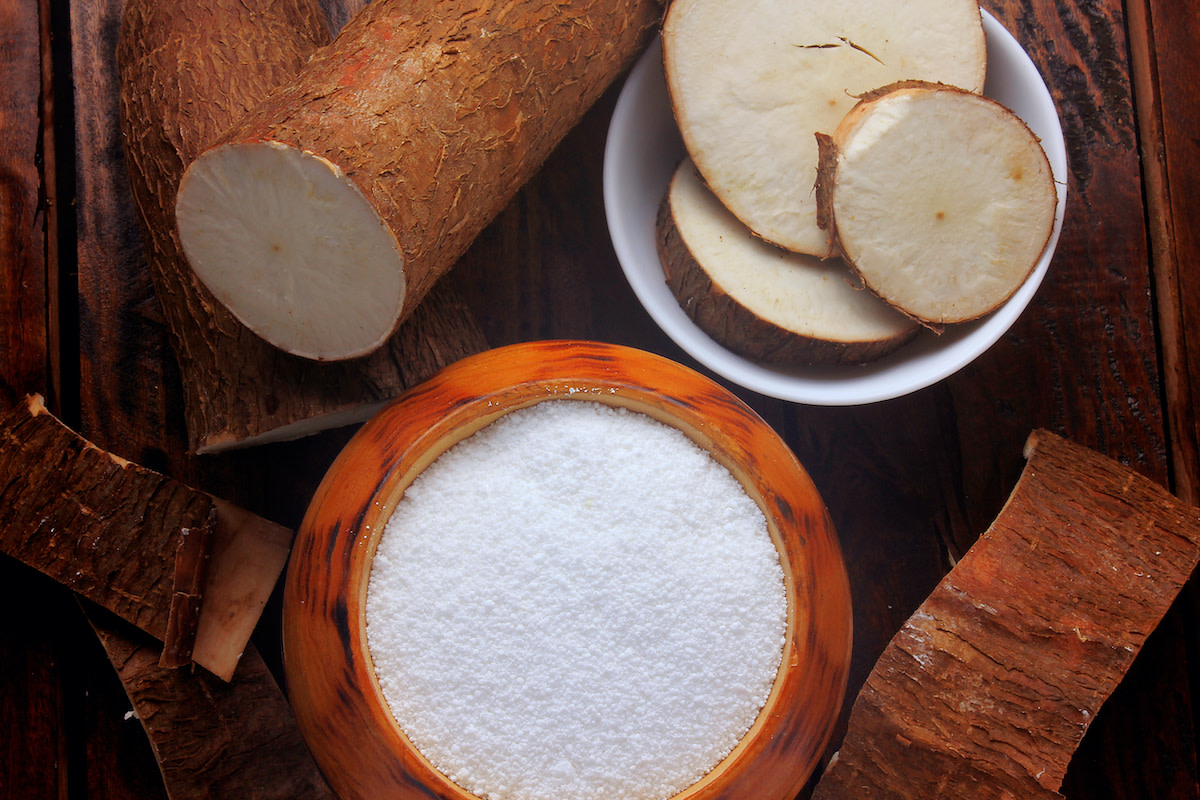Cassava Flour: How to Cook With Cassava Flour
Written by MasterClass
Last updated: Jun 21, 2021 • 3 min read
Cassava flour, made from the root of the cassava plant, is a neutral-tasting flour and a common ingredient in gluten-free cooking and baking.
Learn From the Best
What Is Cassava?
Cassava, also known as yuca, is a long, starchy root vegetable similar to a sweet potato that has long been a staple food in Latin American and Caribbean cooking. Though the cassava plant is native to South America, the tuber is also grown across southeast Asia and sub-Saharan Africa. When cooked whole, it has a mild nutty flavor and can be eaten mashed, boiled, or fried, or used as an ingredient in stews and other one-pot dishes. It’s also used in traditional dessert recipes, such as cassava cake and pudding.
Both cassava flour and tapioca flour (also called tapioca starch) are made from the cassava root—the root is peeled, dried, and ground until it reaches a texture similar to wheat flour. The resulting flour has a mild flavor, which makes cassava flour an ideal substitute for wheat flour.
The Nutritional Value of Cassava Flour
The cassava root is grain-free, nut-free and, unlike wheat products, contains no gluten, making it an excellent gluten-free flour replacement. It’s become more widely available in recent years with the rise of gluten-free diets and can be found in most grocery stores and online food retailers.
For those following a keto diet, cassava flour is not recommended because it is a carbohydrate-dense food. While it is considered a paleo-friendly item, it’s worth noting cassava is not a low-calorie or low-carb food—it’s packed with double the calories of a white potato and is high in carbs (though it does contain more protein than a potato).
How to Use Cassava Flour in Cooking
You can use cassava flour, though it’s important to always cook cassava before eating it. The root contains cyanide when raw, but it is safe to consume after you properly soak or cook it (commercially available cassava flour is thoroughly processed to remove the cyanide).
When used in baking, cassava flour can replace all-purpose flour because it has a very mild flavor. Or you can use it in place of wheat flour for coating food before frying, such as fried chicken or pan-fried chicken breasts. Expect a similar crunch and browning to regular flour. Keep in mind that cassava is lighter and more absorbent than wheat-based flours (white or whole wheat). For that reason, you’ll need slightly less cassava flour versus regular flour in baked goods.
Given its similarity to all-purpose flour, cassava flour has become a staple in gluten-free baking. It's easy to find cassava flour recipes for sweets, such as brownies, chocolate chip cookies, and waffles. It's also a common ingredient in gluten-free tortillas, crackers, and pasta.
3 Differences Between Cassava Flour and Tapioca Flour
Both cassava flour and tapioca flour are derived from the cassava plant, but there are differences between the two starches.
- 1. Processing: Cassava flour is made from grinding the whole root until it’s a soft powder, in a method similar to other wheat flour substitutes, such as coconut flour or almond flour. Tapioca flour, also known as tapioca starch, is made from the cassava root but is processed differently—the root is washed, pulverized into a soft pulp, and then squeezed to extract the liquid. When the liquid evaporates, the extra fine powder that remains (the starch) is tapioca flour.
- 2. Taste: Because cassava flour is less processed, it retains a light nutty flavor. In contrast, tapioca flour has no flavor, other than leaving a faint starchy taste on your tongue if consumed raw.
- 3. Nutritional value: Cassava flour is a good source of resistant starch and contains small amounts of iron and vitamin C. It’s higher in dietary fiber than tapioca. Tapioca flour offers fewer vitamins, and its calories are nearly pure carbohydrates.
Be prepared for sticker shock if it’s your first time buying it—cassava flour is typically two to three times more expensive than wheat flour, and specialty organic brands may be nearly four times as expensive.
Want to Learn More About Cooking?
Become a better chef with the MasterClass Annual Membership. Gain access to exclusive video lessons taught by the world’s best, including Gordon Ramsay, Gabriela Cámara, Chef Thomas Keller, Dominique Ansel, Yotam Ottolenghi, Alice Waters, and more.
